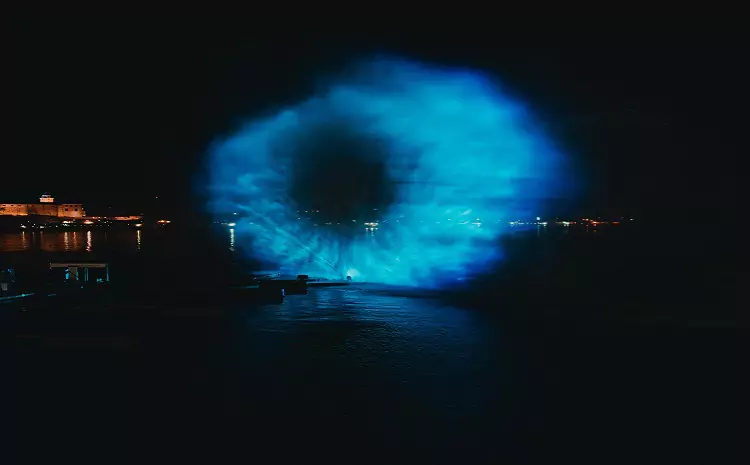Outdoor projection mapping is an awe-inspiring form of visual art and entertainment that transforms ordinary structures, landscapes, and objects into dynamic canvases for immersive experiences.
Whether you’re planning an architectural projection mapping display, organizing a large-scale event, or setting up a cozy backyard projection, one crucial factor to consider is the brightness of your projector, measured in lumens. In this article, we will explore how many lumens for outdoor projection are needed and the various factors that influence this requirement.
Understanding Lumens
Before delving into lumens’ role in outdoor projection mapping, it’s essential to grasp what lumens are and their significance. Lumens are a unit of measurement used to quantify the brightness of a projector’s output. In simple terms, more lumens mean a brighter image on the projection surface. In the context of outdoor projection mapping, lumens are a critical factor in achieving clear and vivid visuals that captivate your audience. You can read more about lumens here.
Factors Affecting Outdoor Projection Mapping Lumens
Several factors come into play when determining the required lumens for an outdoor projection mapping project:
- Ambient Light Conditions: The amount of ambient light in your outdoor environment has a significant impact on the visibility of your projection. Outdoor settings vary from broad daylight to twilight, and the lumens needed depend on the time of day and light conditions.
- Weather Conditions: Weather elements such as rain, fog, or clear skies can affect the way light interacts with your projection. Rain or fog may scatter light, reducing brightness, while clear skies provide ideal conditions.
- Audience Size and Viewing Distance: The size of your audience and their distance from the projection surface also affect lumens requirements. A larger crowd or greater viewing distance necessitates higher brightness to ensure everyone sees the image clearly.
- Surface and Projection Area Characteristics: The type of surface you’re projecting onto and the size of the projection area impact lumens requirements. Textured or uneven surfaces may absorb more light, requiring higher lumens to compensate.
Types of Outdoor Projection Mapping
To determine the right lumens for your project, it’s essential to consider the type of outdoor projection mapping scenario you’re planning:
- Architectural Projection Mapping: Transforming the facades of buildings or structures into dynamic works of art often requires high lumens to cover large surfaces and create a captivating visual impact. Check out how the endF result can look like.
- Large-Scale Events and Festivals: Events like outdoor concerts, festivals, or immersive art installations require projectors with sufficient lumens to deliver vibrant visuals to large audiences.
- Residential or Backyard Setups: Smaller, more intimate settings like backyard movie nights may require fewer lumens, but ambient light conditions and screen size still play a role in determining brightness needs.
Lumen Requirements for Different Scenarios
Now, let’s delve into the recommended lumens ranges for different outdoor projection mapping scenarios:
- Architectural Projection Mapping: For architectural mapping, you’ll typically need projectors with lumens ranging from 10,000 to 40,000 or more, depending on the size of the building and ambient light conditions. Large-scale architectural mapping often demands the highest brightness levels.
- Large-Scale Events and Festivals: Events with sizable audiences and expansive projection surfaces may require projectors with 20,000 to 60,000 lumens or even more to ensure visibility and impact, especially in the presence of ambient light.
- Residential or Backyard Setups: Smaller residential settings can work well with projectors ranging from 2,000 to 8,000 lumens. However, the choice of projector still depends on the screen size, ambient light, and desired image quality.
Selecting the Right Projector
Choosing the appropriate projector for your outdoor projection mapping project is crucial. When evaluating projectors, consider not only their lumens but also other essential features such as resolution, durability, and connectivity options.
It’s important to strike a balance between brightness (lumens) and resolution. In some cases, higher resolution might be more critical than extreme brightness, especially when intricate details are essential. Consider your specific content and audience when making this decision.
Maximizing Lumens in Outdoor Projection
To optimize brightness in your outdoor projection mapping, here are some strategies to consider:
- High-Gain Projection Screens: Investing in high-gain projection screens can enhance the reflectivity of your projection surface, making the most of available lumens.
- Managing Ambient Light: Proper positioning of the projector to minimize the impact of ambient light sources, such as streetlights, can help maintain image clarity.
- Adjusting Projector Settings: Fine-tune your projector’s settings to maximize brightness without compromising image quality. This may involve adjusting contrast, brightness, and keystone correction settings.
Remember that there is no one-size-fits-all answer to the lumens question, as each project is unique. Take the time to assess your specific needs and environmental conditions before choosing the projector that will bring your outdoor projection mapping vision to life.

